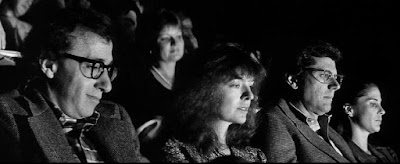 |
| Warren William, Hayward, Joan Bennett, Hayward |
When it is discovered that the queen has given birth to two identical boys, it is decided one will have to be sent away to be raised by a foster father, D'Artagnan (Warren William), to avoid the in-fighting and sibling rivalry that would undoubtedly result. Alas, things don't work out as planned when the foppish and cruel Louis XIV (Louis Hayward) discovers that he has a twin in Philippe of Gascony (also Hayward), who. along with his "father," D'Artagnan, objects to the salt tax. D'Artagnan and his fellow musketeers are rounded up and put in prison, but it amuses Louis to seemingly allow Philippe the run of the palace (an unlikely development, considering). Philippe takes advantage of Louis' absence to free his father and musketeers and work other wiles. Eventually, however, Louis wises up and imprisons his brother, forcing him to wear an iron mask and hoping his growing beard will eventually suffocate him. But Louis is wrong in thinking that this is the end of his twin just as Philippe is wrong in underestimating his brother. The Man in the Iron Mask had been filmed both before and after this version -- Dumas' story has been filmed many times, in fact -- but this may be the best-known version. At times the verisimilitude of the film is about on the level of an Abbott and Costello feature, but whatever the picture's flaws, it boasts a remarkable lead performance from Louis Hayward [Midnight Intruder], who is superb as he successfully limns two distinct characterizations. There is also fine work from the ever-florid Warren William; from William Royle [Drums of Fu Manchu] as the Commandant of the Bastille; and especially from the marvelous Joseph Schildkraut [Cleopatra] as the utterly loathsome Fouquet, a former tutor who "advises" his majesty. Joan Bennett is a little out-classed in this (not to mention Marion Martin as Louis' French mistress!), as costume dramas were not her forte. There's a very good score by Lucien Moraweck. Albert Dekker, Dwight Frye, and Peter Cushing (in his film debut) are also in the picture, but don't blink or you might miss them!
Verdict: A superb lead performance -- or rather two of them -- is the chief distinction of the picture. **1/2.




























